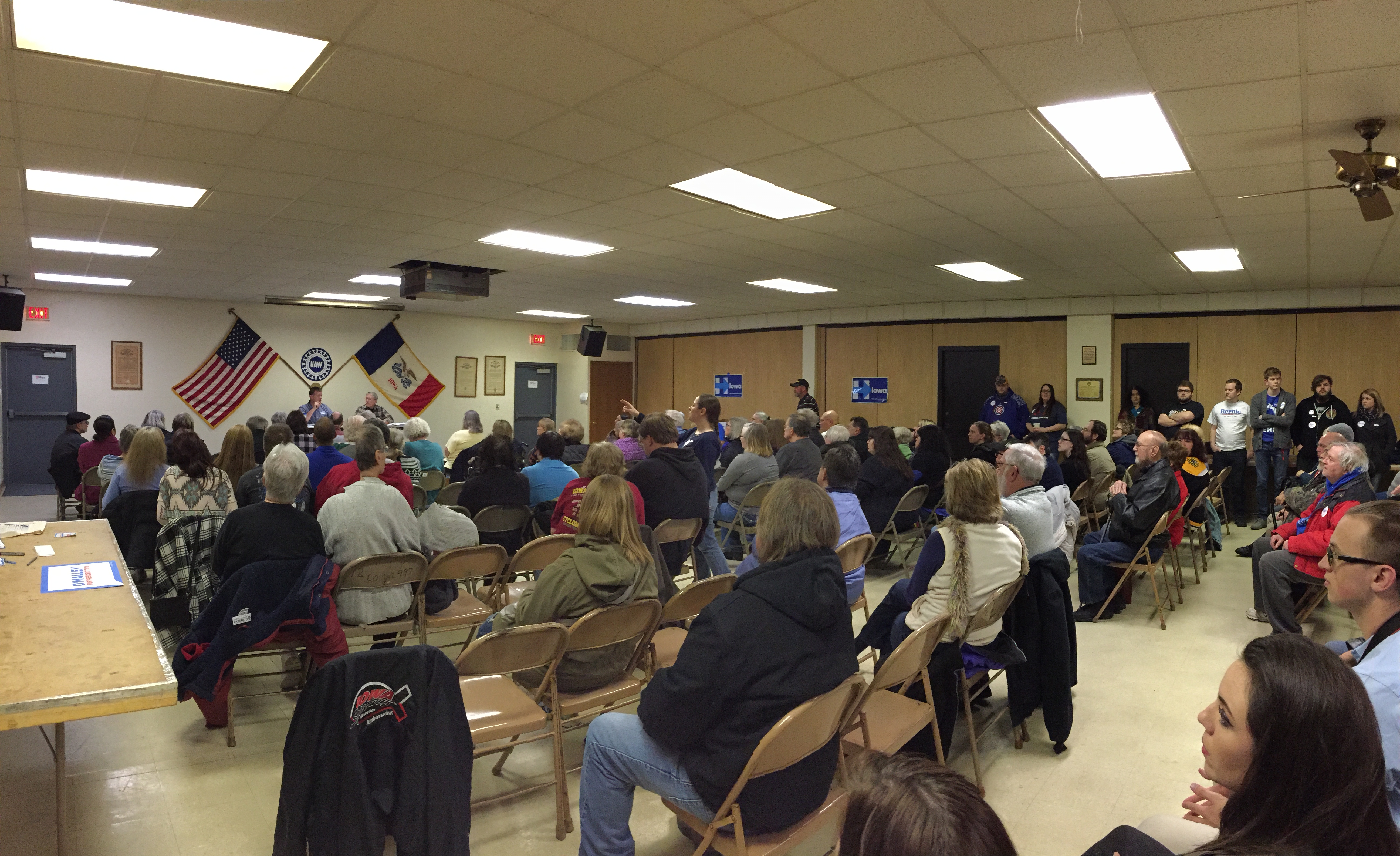
The nature of the Democratic process at the Iowa caucuses has historically causes presidential candidates strategize in attempts to increase their chances of victory at the event — but Iowans are used to these tricks.
In 2008, then-Sen. Barack Obama used a strategy — if voters didn’t name Obama as their first choice, Obama campaign staffers would encourage them to pick Obama as their second choice. In 2016, Iowa voters suspected a strategy between presidential candidates Hillary Clinton and former Gov. Martin O’Malley days before the Iowa caucuses.
The goal was to keep O’Malley viable during the caucuses. If O’Malley was not viable it was understood that Clinton supporters would realign to ensure he would be. This was an attempt to lock in O’Malley supporters, in fear that if voters realigned they would support Sanders instead of Clinton. In a race so close, Clinton couldn’t take any chances of a repeat of 2008.
Ann Selzer, The Des Moines Register’s pollster, was quoted in a USA Today article saying Sanders appeared to pick the voters up who realigned, along with other late-deciding voters.
“The unviable O’Malley supporters and the undecideds appear to have chosen the non-Clinton candidate,” Selzer says in a note to Register editors Tuesday morning.
Susan Daniels was the Newton 1-1 precinct captain for O’Malley during the Iowa caucus. Daniels says her role was to ensure O’Malley was viable and received as many votes as possible. Daniels says O’Malley told his staffers to stand strong and to do as much as they could to bring people to their area. Daniels says if O’Malley didn’t achieve viability after the second realignment, she was told to encourage O’Malley supporters to go to Clinton.
Daniels says she heard about the caucus night strategy from an O’Malley organizer. Daniels says she also heard before caucus night the Clinton campaign had intentions to ensure O’Malley’s viability on caucus night.
“Yes, their [Clinton administration] instruction is to make sure that he [O’Malley] is viable. I haven’t talked to the precinct captains, but that is what our organizer has said that he was told these instructions.”
– Susan Daniels , Newton 1-1 O’Malley precinct captain
It was Daniels’ impression that if O’Malley wasn’t viable, Clinton supporters would move in order to make O’Malley viable.
Carolyn Cook, Clinton’s Newton 1-1 Precinct captain, says she wasn’t aware of a strategy between Clinton and O’Malley. However, it was a difficult task to ask Cook questions about a potential Clinton strategy.
“I hadn’t heard that — that’s news to me,” Cook says. “We were not told that. To me it makes sense though … if you’re a Hillary supporter.”
In my opinion Cook was in favor of the strategy because it would benefit all candidates to stay viable, but it would also help Clinton from potentially losing delegates after the realignment process. With or without a strategy is was clear Cook tried to get her candidate as many delegates as possible by attempting to persuade O’Malley supporters to join Clinton. One more vote would have tied Sanders and Clinton. Instead Clinton received four and Sanders received five delegates.
Other Iowa voters had heard of the potential strategy between Clinton and O’Malley. Tom O’Donnell of Des Moines attended an O’Malley campaign event and says he was caucusing for O’Malley. He says he had heard of an effort by Clinton to ensure O’Malley had viability.
“I have heard there may be a move on foot on part of Clinton supporters to send people to the O’Malley corner in theory that would take delegates away from Sanders. Whether that is organized or not, I don’t know.”
– Tom O’Donnell, caucuser for O’Malley
O’Donnell says he didn’t think the strategy was unethical, but he does think strategies warp the process of the caucus.
Steve Kawaler, another O’Malley supporter, says he agrees with O’Donnell, and says candidate strategies are not new to veteran caucusers.
“I don’t think it’s unethical, I see it as the smart guys politically come out ahead there,” Kawaler says. “If you look towards the general election you need all of the arrows in your corner. People who can manage the Iowa caucuses are in a reasonably good position going forward.”
Dave Stolper was a caucus goer at the Newton 1-1 precinct and was planning to caucus for O’Malley. Stolper says while he hadn’t heard an official confirmation of the strategy, but he had read about a similar successful strategy in past caucuses.
“When candidate A has the most supporters during first round of voting, they may help the nonviable candidate in order to take delegates from candidate B who is viable but may not have as many votes as their candidate did – so I wouldn’t be surprised,” Stolper says.
After looking at the exhaustive data reported by the Democratic party on the results among precincts, it is my opinion that the strategy didn’t work the way it was intended. It appeared O’Malley still received an extremely low percentage of the delegates. A majority of the results showed Sanders and Clinton were neck and neck on delegates.
Therefore, it appears to me Clinton wouldn’t have had extra voters to send to O’Malley, if she had hopes to beat Sanders in the overall caucus. Even if the strategy was successful it no longer benefits O’Malley because he officially announced the end of his campaign Monday night.
